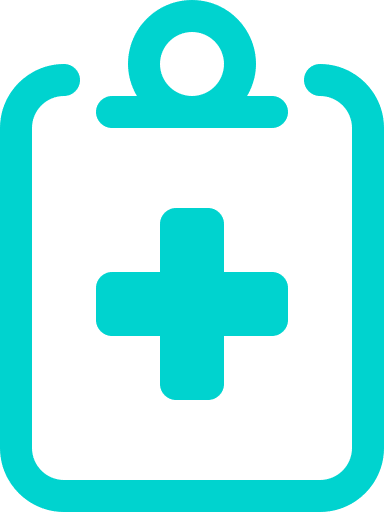Thrush:
Types and Treatments


For most people, thrush is a harmless infection, however, thrush symptoms can be extremely bothersome for anyone who has them. However, Thrush (candida infection) can potentially be very serious for those who are immunocompromised. With that in mind, we will discuss the different types of thrush and how to treat them.
What Are The Most Common Types Of Thrush?
Thrush, also known as candidiasis, can affect many various parts of the body, including the mouth and throat, vagina, penis, and skin. Thrush can become invasive and spread to other body regions in those who are severely immunocompromised. There are 3 most common types of thrush; Genital Thrush, Oral Thrush and Intertrigo.
Genital Thrush
Genital thrush typically affects women (vaginal thrush) but it can also affect men (penile thrush). Lactobacillus bacteria normally keep the level of Candida in the vaginal area under control. Candida can overgrow and produce an infection when Lactobacillus levels are disrupted in some way. You can get a genital thrush infection from sex, but this is uncommon. It is not considered to be a sexually transmitted disease.
Symptoms of Vaginal Thrush
Symptoms can include:
- Itching
- Burning
- Painful intercourse
- Painful urination
- Irritation or redness around the vagina
- Whitish or whitish-grey cottage cheese-like discharge (which tends to have an unpleasant smell)
However, if the thrush infection is closer to the cervix than the vaginal opening, there may be no symptoms and the woman may be unaware she has thrush.
Symptoms of Penile Thrush
Symptoms can include:
- Irritation
- Burning and redness around the head of the penis and under the foreskin
- Whitish or whitish-grey cottage cheese-like discharge (which tends to have an unpleasant smell)
- Difficulty pulling back the foreskin
Gential Thrush Treatment
There are a number of thrush treatments available. Thrush is usually treated with antifungal medication. It can take the form of an oral tablet, a tablet that you insert into your vagina (pessary), or a cream that you apply to ease the irritation. Simple thrush infections should disappear within 7 days of beginning treatment.
It is not necessary to treat partners unless they display symptoms.
Oral Thrush
Oral thrush is common in babies and elderly persons who wear dentures. It is also common if you are using steroid inhalers. Oral thrush is usually treatable with over-the-counter medications from a pharmacy. Basic mouth/ denture hygiene is a good place to begin to try and prevent oral thrush.
Symptoms of Oral Thrush
Symptoms include:
- White or whitish-yellow coating in your mouth/ tongue that is difficult to rub off
- Spots that when rubbed off, leave a red patch that can bleed
- Red or inflamed area under your dentures
- Red and irritated mouth without white spots (especially after taking steroids or antibiotics)
- Food tasting unusual, or different to how it usually does
- Cotton like, or burning sensation in the mouth
Oral Thrush Treatment
Oral thrush is treated with antifungal medicine, which can be taken as a tablet, liquid, or lozenge. Usually, nystatin or miconazole medications are advised to treat this.
For more severe episodes, an oral course of fluconazole can be given.
If you are unsure if you have thrush or you don’t see an improvement after 7 days, you should book an appointment to see your GP. You may need alternative treatment. There are other conditions that can mimic the symptoms of oral thrush. Some of these can be serious if not treated.
Intertrigo
Intertrigo is a thrush/ candida infection of the skin folds. Warm, damp, or humid environments create ideal conditions for yeast or candida growth. Armpits, groins, abdomen, the skin between your fingers and toes, and the area under your breasts are all examples of such areas.
Poor hygiene, infrequent garment changes, diabetes, obesity weakened immune system and antibiotic treatments would be considered high-risk factors for developing intertrigo.
Symptoms of Intertrigo
Symptoms include:
- Red irritated rashed in affected areas
- Blisters or lesions on affected areas
- Curd-like discharge
Intertrigo Treatment
Antifungal creams are commonly used to treat intertrigo caused by candidiasis infection. These may include antifungal treatments such as clotrimazole and miconazole.
To relieve irritation and swelling, the anti-fungal cream can be combined with a steroid cream if needed. The skin should be kept dry when recovering from this thrush infection.

How Do You Get Thrush?
Thrush is more likely to develop if you:
- Have inflamed or damaged skin
- Use items such as perfumed products, bubble baths, or vaginal cleansing products that might irritate the skin
- Have recently taken antibiotics
- Are pregnant
- Have poorly controlled diabetes, a weakened immune system (for example, from chemotherapy or living with HIV)
What Can I Do To Help Manage Thrush Symptoms?
- Wash the affected area with water and an emollient only (e.g. Silcocks Base)
- After washing, ensure you dry the area completely
- Wear breathable garments such as cotton – do not wear tight garments
- Do not take long or hot baths
- Do not use perfumed products around affected areas
- Change your pad or tampon regularly (genital thrush)
What If I Have Recurring Thrush?
If you frequently experience thrush (you get it more than 4 times in 12 months), you should attend your GP for assessment to ensure there are no other conditions that are causing recurrent infections. They will also be able to advise if you need treatment for a longer period of time (up to 6 months).
How Can I Help To Prevent Thrush?
There are a number of things that you can do to prevent thrush. These include:
- Instead of soap, use an emollient (soap substitute)
- Before and during sexual intercourse, make sure your vagina is properly lubricated
- Tights, nylon underwear, leggings, lycra shorts, tight jeans or trousers, and other restricting or synthetic apparel should be avoided
- Avoid applying deodorants and soaps around the affected area, such as:
- Genital sprays or washes
- Bubble baths
- Other irritants such as disinfectants and antiseptics
- If you are prescribed an oral antibiotic for another ailment, inform your doctor that you are prone to thrush (they make be able to prescribe an alternative)
- If you are aware of anything that triggers thrush, you should avoid these

Is Vaginal Thrush An STI?
Oftentimes, people perceive thrush as a sexually transmitted infection (STI), but this is not the case. However, it can be triggered by sex.
During sex, bacteria can be transferred from your partner’s finger or penis into your vagina’s ecosystem, which has natural bacteria and candida. This disturbance may be sufficient to cause a vaginal yeast infection. Sex toys can also spread thrush.
If you have penetrative sex with someone who has a penile or vaginal yeast infection, your chance of infection increases.
It is advised that you refrain from sexual intercourse until you are fully symptom-free.
Is Thrush Harmful During Pregnancy?
Three out of every four women will experience thrush at some point in their lives. This can be down to a number of factors including antibiotic usage, wearing tight-fitting underwear and fluctuating hormone levels. Pregnant women are more prone to developing thrush due to the significant hormonal changes, particularly high oestrogen levels, that occur during pregnancy.
This is not harmful to you or your baby and there are safe treatments available to manage your symptoms.
You should not be concerned if you acquire thrush during pregnancy or while attempting to conceive.
Repeat Prescription
Gential Thrush Treatment
Order a prescription for Gential Thrush Treatment online with Webdoctor.ie! Once your request has been approved, we can send your prescription directly to your chosen pharmacy via secure Healthmail.
How To Order A Prescription For Thrush Treatment
We offer treatment for all of the above types of thrush; genital thrush, oral thrush and mucocutaneous candidiasis.
For genital thrush treatment, you can avail of our online repeat prescription service. To request your treatment, simply fill out an online questionnaire. Your request will be reviewed by one of our Irish-registered GPs. If you are medically suitable, your prescription will be sent to an Irish pharmacy of your choice via secure Healthmail. No GP appointment needed.
For oral thrush and mucocutaneous candidiasis, you must book an online appointment with one of our 40+ Irish-registered GPs. This service is available 7 days a week, including weekends.
How It Works
Through an online medical questionnaire, face-to-face video consultation or home health test, our online doctors will review your case and prescribe the best treatment for you.

Step 1
Online Questionnaire

Step 2
Medical Review
